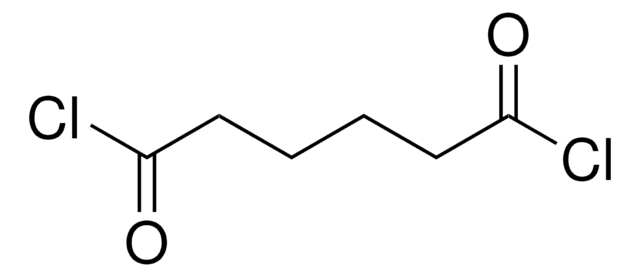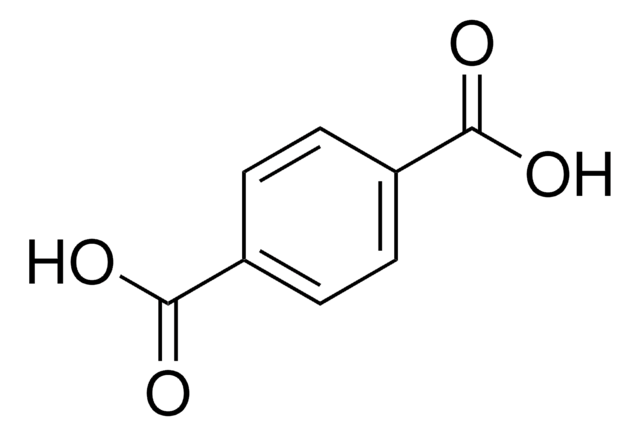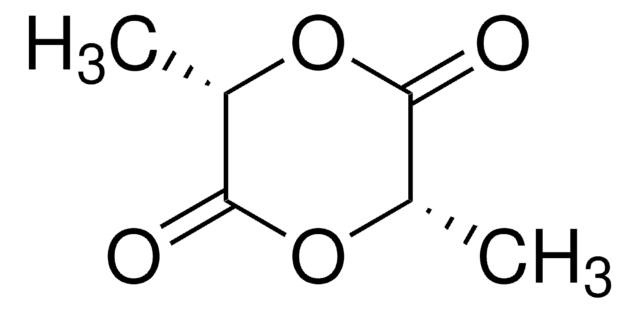B3000
1,4-Benzenedimethanol
99%
Sinonimo/i:
p-Phenylene dicarbinol, p-Phenylenedimethanol, p-Xylene-α,α′-diol, p-Xylylene dialcohol, NSC 5097
Autenticatiper visualizzare i prezzi riservati alla tua organizzazione & contrattuali
About This Item
Formula condensata:
C6H4(CH2OH)2
Numero CAS:
Peso molecolare:
138.16
Beilstein:
2042077
Numero CE:
Numero MDL:
Codice UNSPSC:
12352100
ID PubChem:
NACRES:
NA.22
Prodotti consigliati
Livello qualitativo
Saggio
99%
Stato
powder
P. ebollizione
138-143 °C/1 mmHg (lit.)
Punto di fusione
114-118 °C (lit.)
Stringa SMILE
OCc1ccc(CO)cc1
InChI
1S/C8H10O2/c9-5-7-1-2-8(6-10)4-3-7/h1-4,9-10H,5-6H2
BWVAOONFBYYRHY-UHFFFAOYSA-N
Cerchi prodotti simili? Visita Guida al confronto tra prodotti
Categorie correlate
Descrizione generale
1,4-Benzenedimethanol acts as a chain extender to prepare dimethylsiloxane-urea-urethane copolymers.
Applicazioni
1,4-Benzenedimethanol can be used to prepare:
- Poly(6-methyl-ε-caprolactone), which is a key intermediate for the synthesis of polylactide based thermoplastic elastomers.
- A Highly cross-linked polymer named HCP−BDM (hyper cross-linked polymer-1,4-benzenedimethanol) via Friedel−Crafts alkylation in the presence of Lewis acid.
- Sulfonated polynuclear aromatic resins.
Codice della classe di stoccaggio
11 - Combustible Solids
Classe di pericolosità dell'acqua (WGK)
WGK 3
Punto d’infiammabilità (°F)
Not applicable
Punto d’infiammabilità (°C)
Not applicable
Dispositivi di protezione individuale
Eyeshields, Gloves, type N95 (US)
Scegli una delle versioni più recenti:
Possiedi già questo prodotto?
I documenti relativi ai prodotti acquistati recentemente sono disponibili nell’Archivio dei documenti.
I clienti hanno visto anche
Synthesis of the sulfonated condensed polynuclear aromatic (S-COPNA) resins as strong protonic acids
Tanemura K, et al.
Tetrahedron, 67(6), 1314-1319 (2011)
Microporous organic polymers synthesized by self-condensation of aromatic hydroxymethyl monomers
Luo Y, et al.
Polym. Chem., 4(4), 1126-1131 (2013)
Polylactide-poly (6-methyl-ε-caprolactone)-polylactide thermoplastic elastomers
Martello MT and Hillmyer M A
Macromolecules, 44(21), 8537-8545 (2011)
Tiejun Ge et al.
Polymers, 11(8) (2019-08-03)
In this experiment, terephthalyl alcohol was used as a modifier to modify phenol under both acidic and alkaline conditions to obtain modified phenols with different molecular structures. Subsequently, the modified phenols reacted with paraformaldehyde in an alkaline environment. After foaming
Takumi Ishida et al.
International journal of molecular sciences, 21(7) (2020-04-05)
To investigate organic field-effect transistor (OFET) properties, a new thienoacene-type molecule, 4,14-dihexyldinaphtho[2,3-d:2',3'-d']anthra[1,2-b:5,6-b']dithiophene (C6-DNADT), consisting of π-conjugated nine aromatic rings and two hexyl chains along the longitudinal molecular axis has been successfully synthesized by sequential reactions, including Negishi coupling, epoxidation, and
Il team dei nostri ricercatori vanta grande esperienza in tutte le aree della ricerca quali Life Science, scienza dei materiali, sintesi chimica, cromatografia, discipline analitiche, ecc..
Contatta l'Assistenza Tecnica.
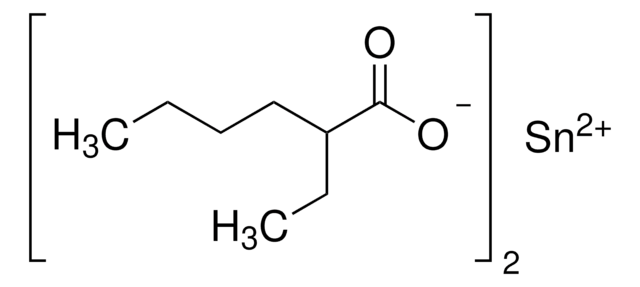
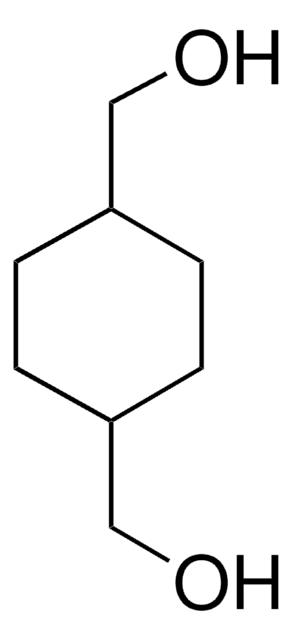
![1,5,7-Triazabicyclo[4.4.0]dec-5-ene 98%](/deepweb/assets/sigmaaldrich/product/structures/171/446/333d560c-cff6-4958-b489-5acfb3057cce/640/333d560c-cff6-4958-b489-5acfb3057cce.png)

